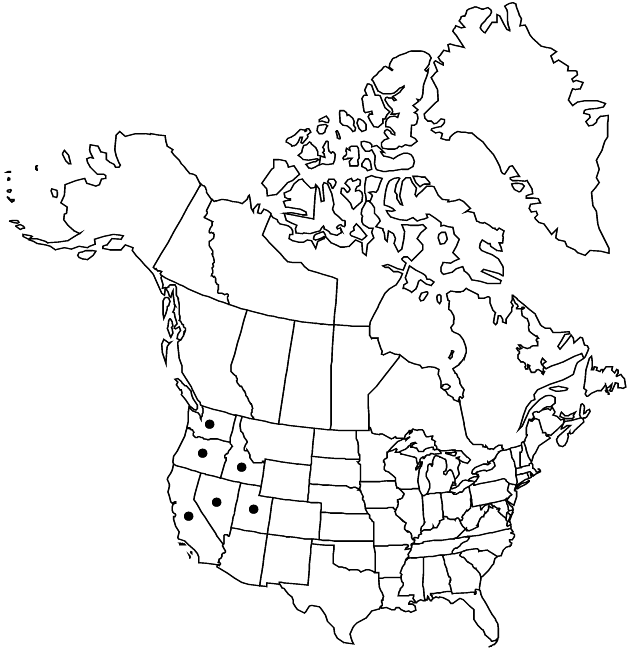Crepis bakeri
Erythea 3: 73. 1895.
Perennials, 10–30 cm (taproots thick, caudices swollen, often covered by old leaf-bases). Stems 1–3, erect (often reddish), stout, mostly simple, sparsely to densely tomentose, often stipitate-glandular proximally. Leaves basal and cauline; petiolate (at least basal); blades elliptic, runcinate, 8–20 × 2–5 cm, margins pinnately lobed (lobes broadly lanceolate, coarsely dentate, midribs often reddish), apices acute, faces sparsely to densely tomentose, stipitate-glandular. Heads 2–22 (1–3 per branch), in cymiform arrays. Calyculi of 8–10, deltate or lanceolate, tomentose bractlets 3–8 mm. Involucres cylindric, 11–21 × 5–15 mm. Phyllaries 10–14, lanceolate, 10–14 mm (margins yellowish), apices acute, abaxial faces glabrous or ± tomentose, sometimes setose and stipitate-glandular, adaxial glabrous or with fine hairs. Florets 11–40; corollas yellow, 16–20 mm. Cypselae dark or pale-brown to yellowish, fusiform, 6–11 mm, apices ± tapered, ribs 10–13; pappi whitish, 6–13 mm. 2n = 22, 33, 44, 55.
Distribution

Calif., Idaho, Nev., Oreg., Utah, Wash.
Discussion
Subspecies 3 (3 in the flora).
Crepis bakeri is generally recognized by the low stature, dense rosettes of pinnately lobed leaves with coarsely dentate lobes, tomentose stems and leaves, stipitate-glandular hairs distally on stems, relatively large involucres, and densely flowered heads. It is considered closely related to C. occidentalis. Three somewhat weakly defined subspecies were recognized by E. B. Babcock (1947).
Selected References
None.
Lower Taxa
Key
| 1 | Involucres narrowly cylindric or turbinate, 18–21 mm in fruit; calyculus bractlets deltate (longest much shorter than phyllaries); pappi longer than cypselae | Crepis bakeri subsp. idahoensis |
| 1 | Involucres broadly cylindric, 13–20 mm in fruit; calyculus bractlets lanceolate (longest ± 1/2 lengths of phyllaries); pappi ± equal to or shorter than cypselae | > 2 |
| 2 | Involucres 16–20 mm in fruit; cypselae 8–10.5 mm, apices somewhat narrow, not strongly tapered; pappi 9–10.5 mm | Crepis bakeri subsp. bakeri |
| 2 | Involucres 13–17 mm in fruit; cypselae 6–9 mm, apices strongly tapered; pappi 6–9 mm | Crepis bakeri subsp. cusickii |
"fine" is not a number."fine" is not a number.